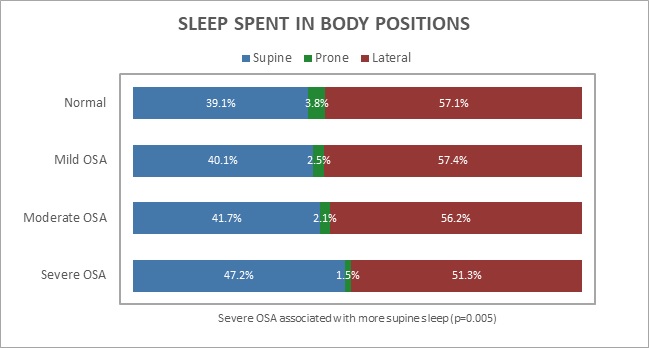Abstract
Introduction: Body sleeping position impacts the severity of obstructive sleep apnea (OSA). There is a paucity of data on the relationship between body posture and various sleep indices in OSA. This is a 7-year retrospective descriptive study of sleep body position and associations in all patients in our laboratory.
Methods: All level 1 sleep studies in adults ?18 years from 2016 to 2023 were reviewed. Patients who had a diagnostic sleep study with a total sleep time of ?360 minutes were included. They were categorized into 4 groups based on overall apnea-hypopnea index (AHI): Normal (<5), mild (5-15), moderate (15-30), severe (>30). Sleep position was categorized into lateral, supine and prone by position sensor and video.
Results: 1502 studies were included. The most common body position was lateral, followed by supine and prone (Fig. 1). In severe OSA, an increased time in supine sleep was observed as compared to the other three groups (p=0.005). A higher BMI, age, heart rate, NYHA, anxiety score and male gender was associated with more severe OSA. Body position did not differ significantly in REM versus non-REM sleep. Patient characteristics showed no correlation with time spent in any position. Older age was associated with a lower sleep efficiency (Spearman co-efficient -.26, P<0.0001).
Conclusion:
The most common body position during sleep was lateral. There was an association between severe OSA and increased proportion of supine sleep.
